~そうにみえる is used to describe your own opinion based on the appearance of somebody else or an external condition. Check more example sentences here.
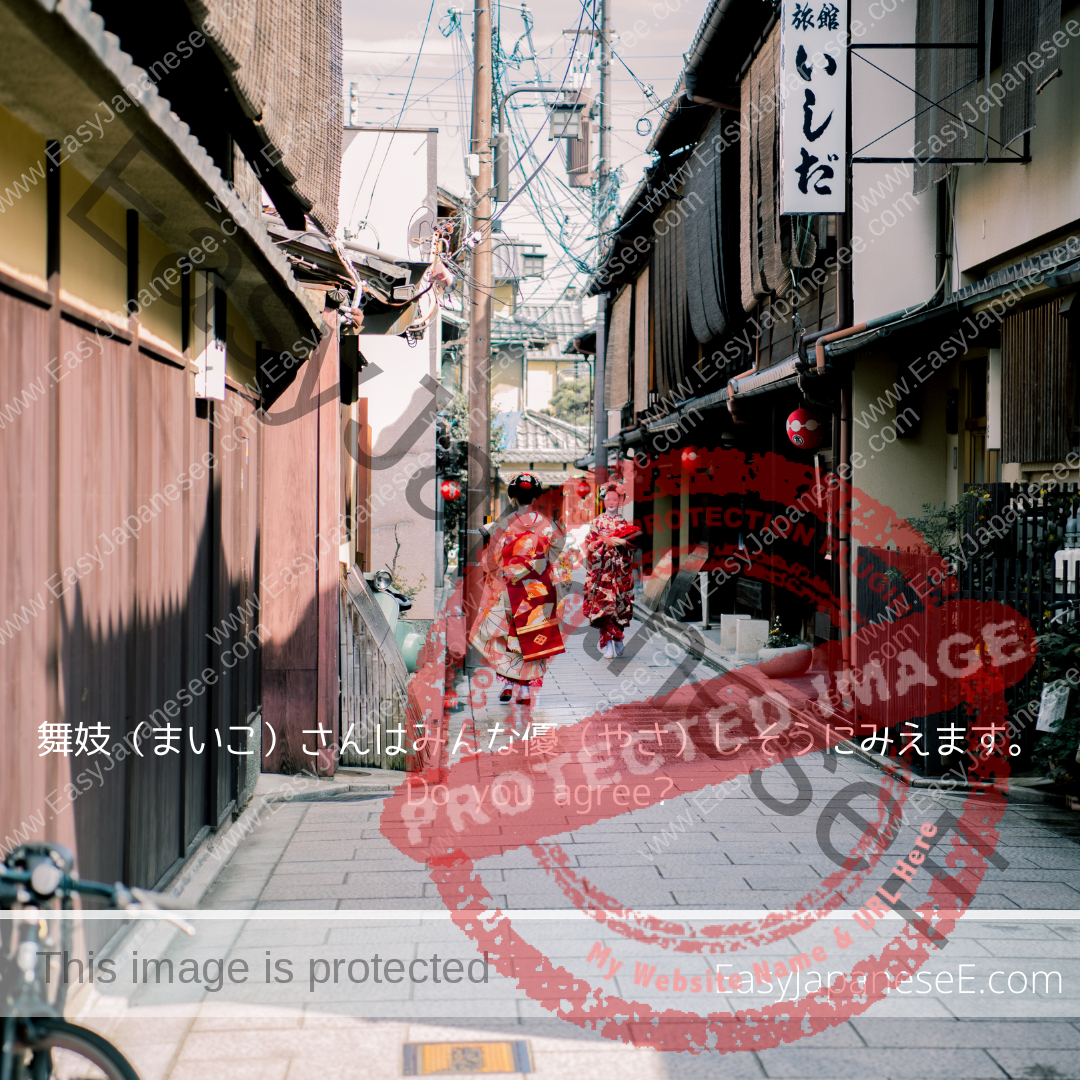

~そうにみえる is used to describe your own opinion based on the appearance of somebody else or an external condition. Check more example sentences here.
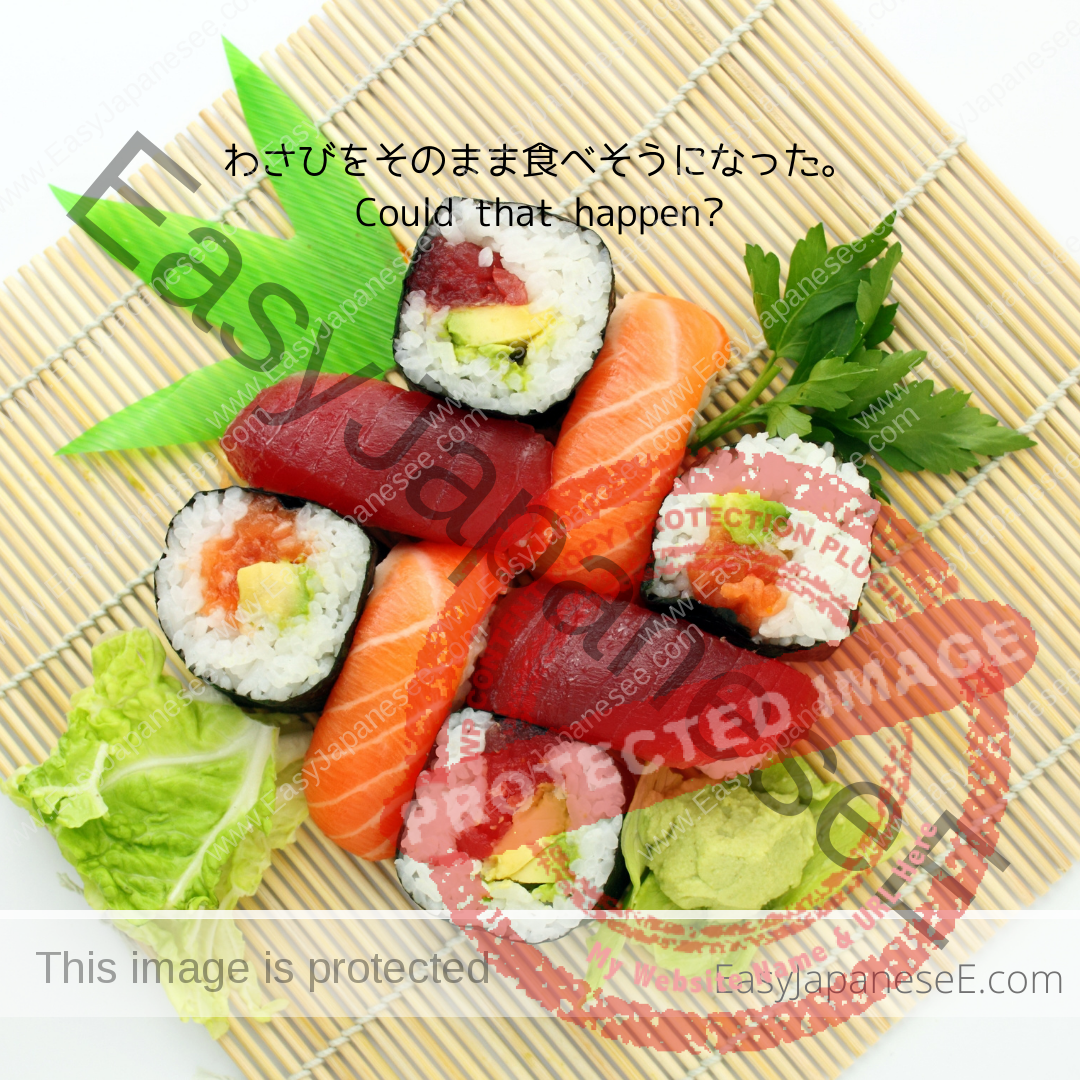
~そうになる is used when something out of a speaker’s control is about to happen. It is often used in the past tense to describe something that almost happened.

~そうにない, ~そうもない and ~そうにもない are used when you describe something that is unlikely to happen. This post explains how to use them and subtle differences among them

~そうにする/~そうにしている means “to look ~” or “to seem ~”. ~そうにする/~そうにしている follows an adjective stem which describes a person’s feeling or sense.
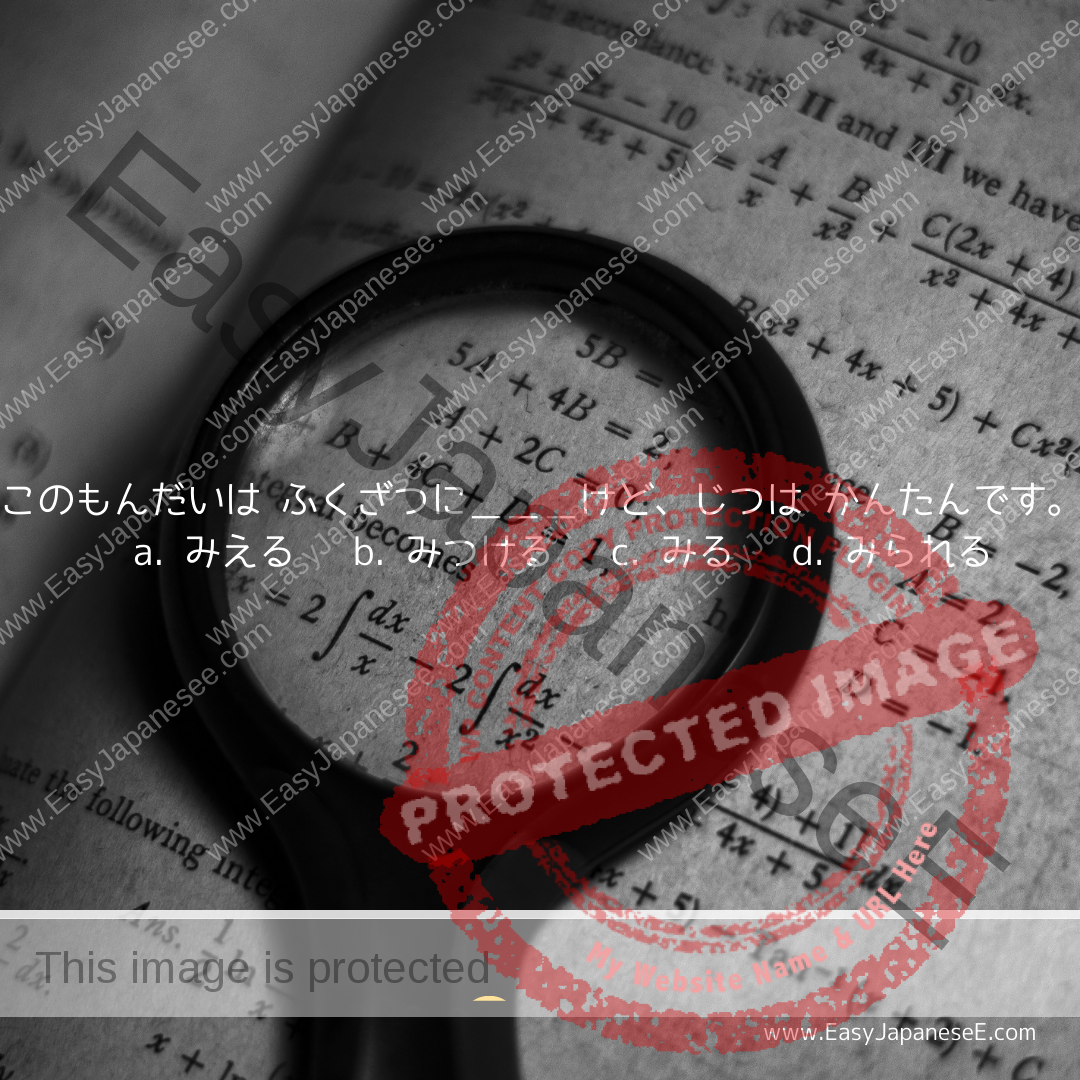
このもんだいは ふくざつに___けど、じつは かんたんです。a. みえる b. みつける c. みる d. みられる The correct answer is a. みえる. 見(み)える has a few…
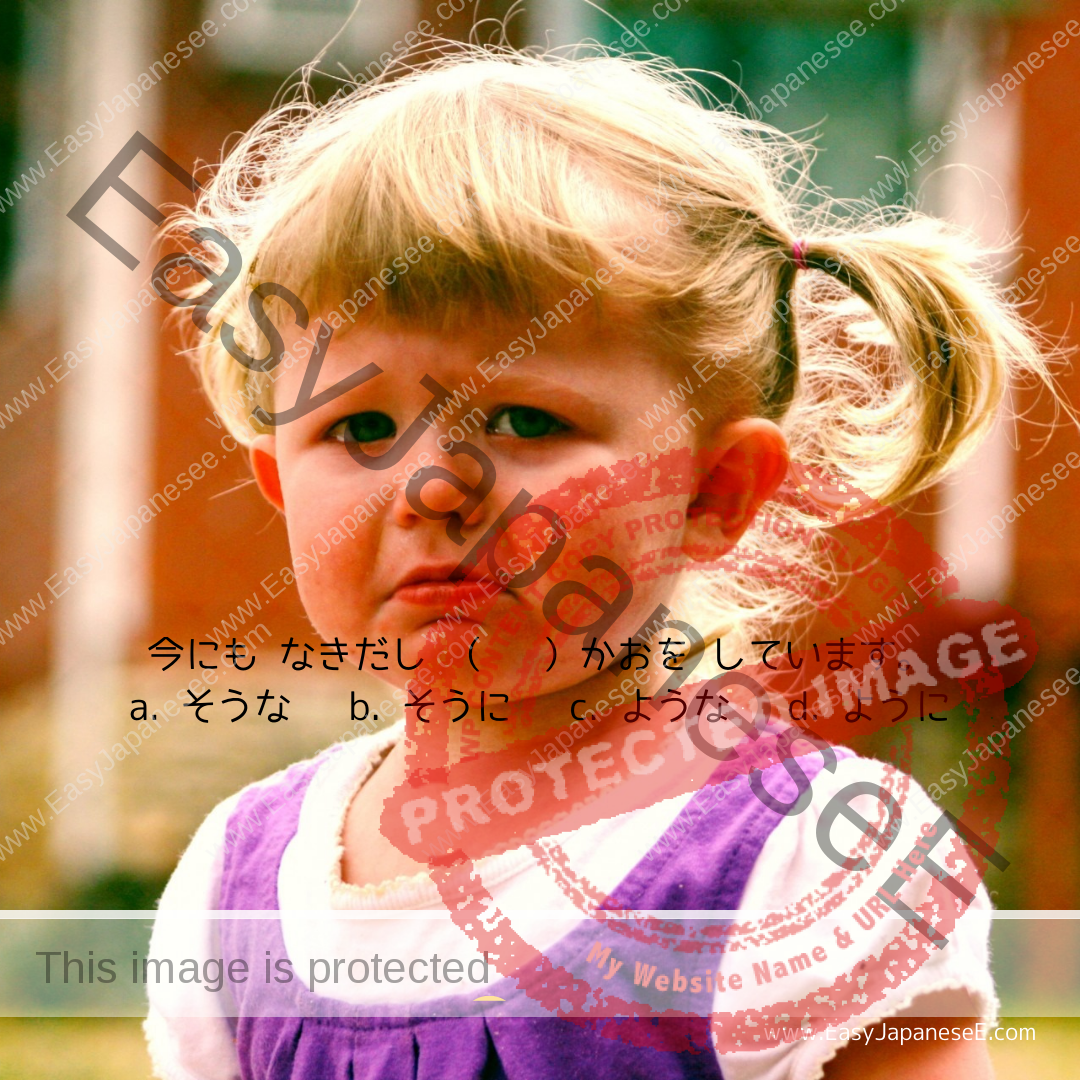
When ~そう is used with the stem of a verb or an adjective, it describes what the speaker thinks will happen or how the situation look to the speaker.
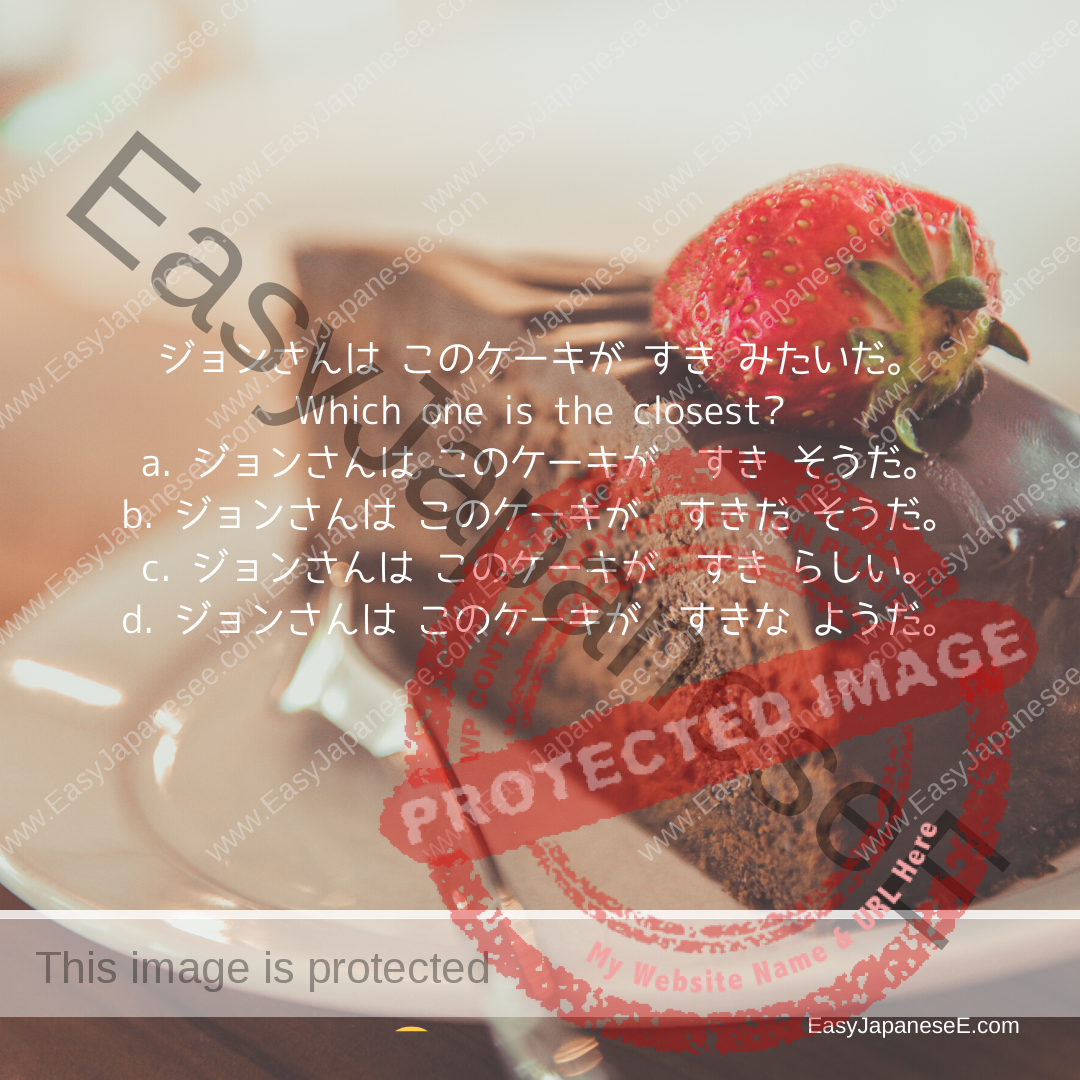
みたい、らしい、そう、よう are all used to describe your allegation, judgement or prediction based on what you have seen/heard. Today I will try to explain the differences.
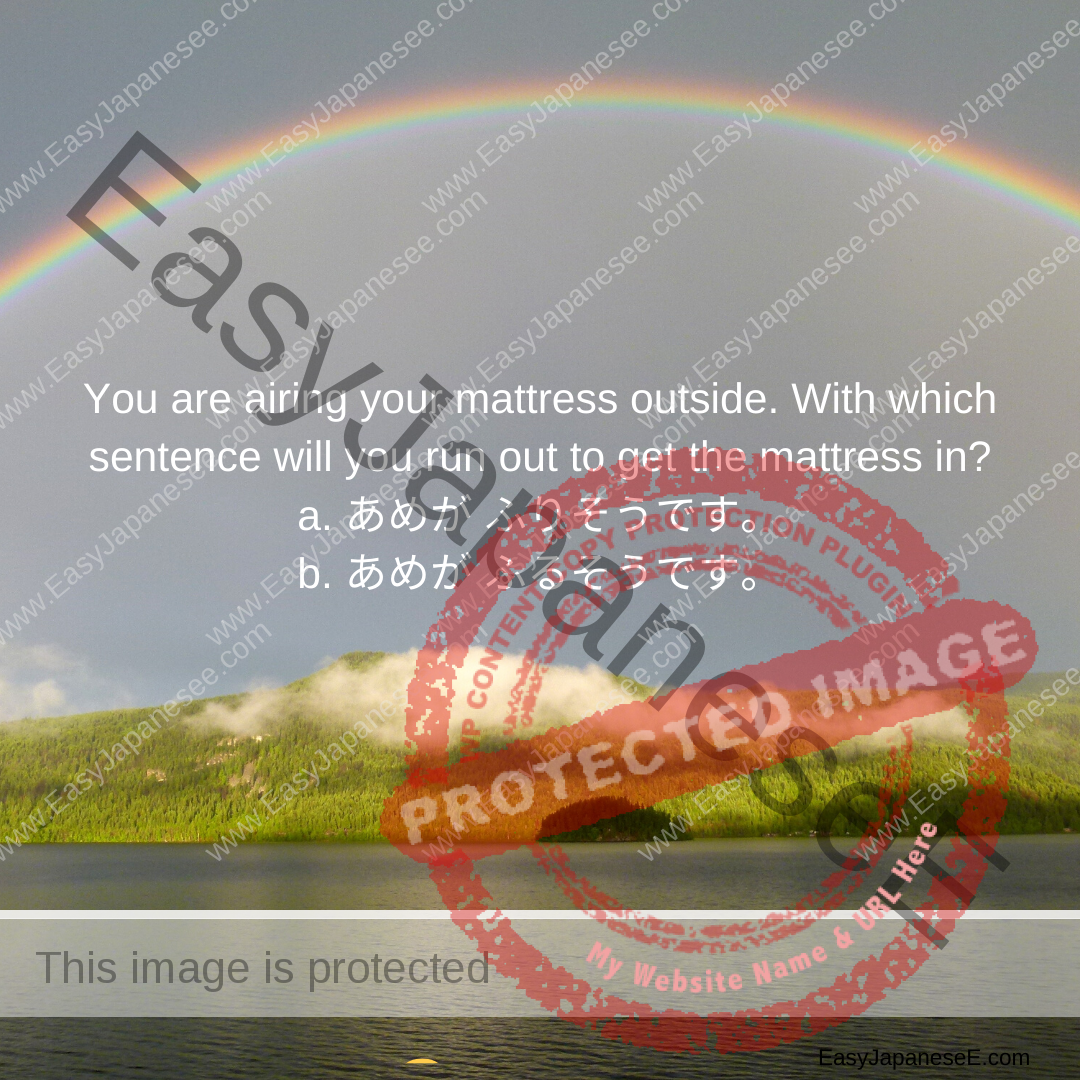
~そうです is often used to make a prediction statement but depending on who is making the prediction, what comes before そうです differs.
